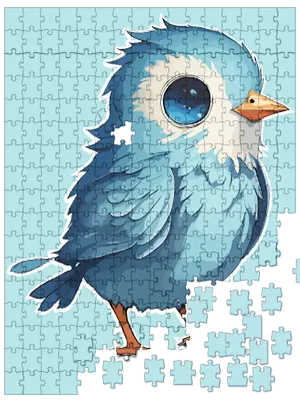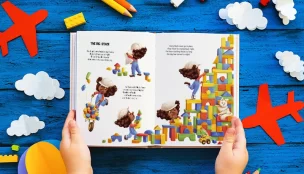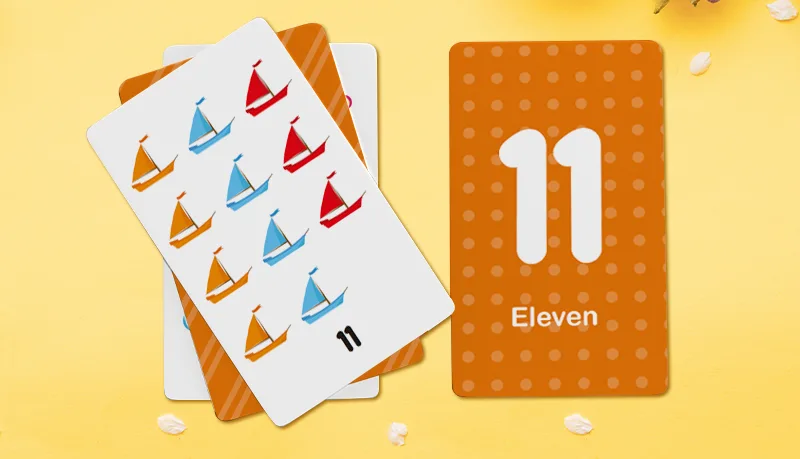Children's books need higher quality than digital can provide
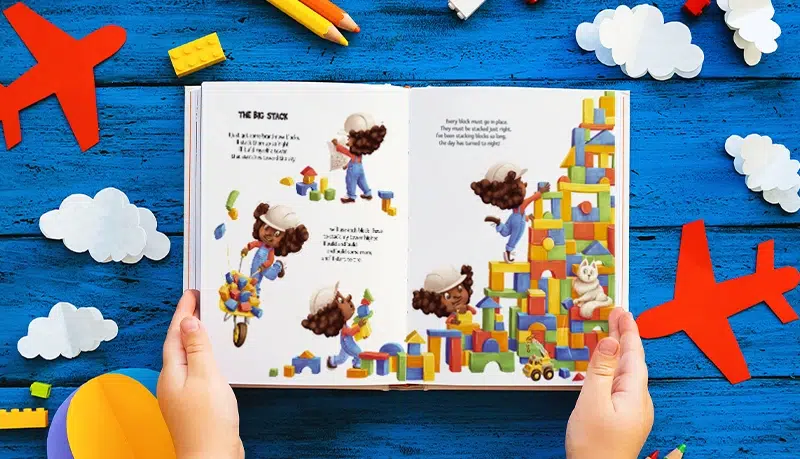
Illustrated children's books are a unique genre in publishing. Why? Because the target readership for these books (children from a few months to about 7 years-old) is not the same as the buyers (parents, teachers, carers, and librarians) making it a challenging market to navigate. As a self-publisher in this niche, it's essential for you to make informed decisions about printing and publishing options to maximize your book's impact and profitability.
While digital printing and print-on-demand (POD) services have been popular among self-publishers in recent years, particularly for mainstream genres such as fantasy, science fiction, romance, crime, and thrillers, there is a growing trend of authors turning to traditional custom offset printing for the higher quality of the product, the wider range of customization options, and the huge financial savings on printing costs for larger runs. But for some genres, offset is the only reliable option.
In this post, we will explore why offset printing is the best choice for self-publishing illustrated children's books and the benefits it offers to authors.
Children's books and POD
The self-publishing industry has experienced significant growth and transformation over the years. Amazon's eBook exclusive self-publishing platform, Kindle Direct Publishing (KDP), which appeared on the scene in 2007, revolutionized the industry. KDP provided authors with a platform to publish and distribute eBooks easily, democratizing the publishing process.
In 2016, Amazon introduced CreateSpace, a POD paperback book printing and distribution service that catered specifically to the self-publishing community. Subsequently, this often handy and cheap but limited publishing option has been absorbed into KDP.
The rise of e-readers and the convenience of POD services have undoubtedly changed the publishing landscape. According to a Bowker report referenced in Publisher's Weekly, on self-publishing, over 2 million books are self-published annually in the US alone. However, as the self-publishing industry matures, authors realize that there are better options available to them, especially for producing illustrated children's books.
The limitations of POD services
While POD services offer convenience and cost-efficiency in some circumstances, there are limitations that self-publishing authors need to consider.
- POD is a suitable option for authors who are just starting out, have limited capital, and do not yet have a substantial fan base or email list, or those who are content to “crank out” throwaway series volumes.
- However, as authors gain traction and their books generate regular sales, they may find that POD services are not the most optimal choice.
- And any author who cares deeply about the quality of their product and the richness of their readers' experience will be interested in exploring the attractive opportunities that alternatives such as offset printing can offer.
- One of the major drawbacks of POD is the quality of materials used. POD books are often made from inferior materials, including limited paper stocks, inks, and glue bindings. This results in a lower-quality product compared to traditionally printed books.
- The cost per unit for POD books is higher compared to offset printing, making it less cost-effective for authors in the long run.
- POD and digital also have a heavy ecological footprint. While offset printing — like any form of printing — isn't without a degree of environmental impact, you can make greener choices with this method by choosing FSC-certified and recycled papers, making your print run more energy and water efficient by batching, and selecting biodegradable non-polluting vegetable inks.
These are simply not options offered by digital-only and POD print services. You really do need offset to make a children's book that is likely to sell.
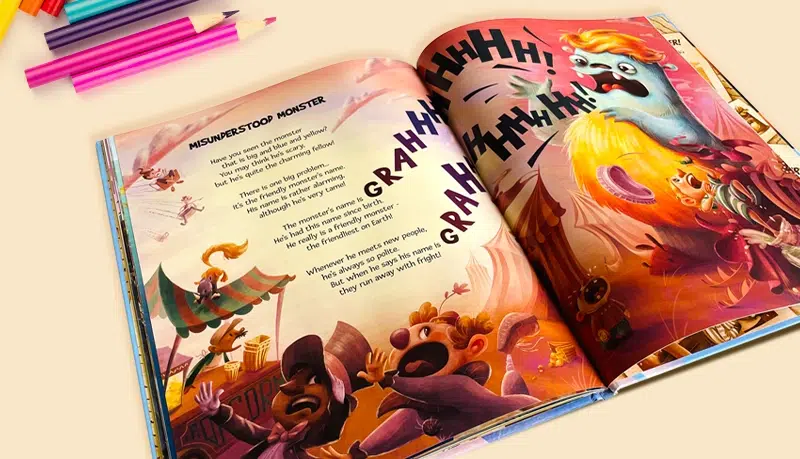
Offset printing children's books
Offset printing, also known as lithography, is an advanced printing method, with state-of-the-art technology, that offers several advantages over POD for self-publishing illustrated children's books. Offset printing involves transferring ink onto paper using a series of printing plates and a specialized large printing press. This process allows for customization options such as:
Other key advantages of offset printing are:
- Superior quality of the base materials
- Better color reproduction
- Durability of the final product
Books printed using offset printing methods are made from high-quality materials and have a professional look and feel. The colors are vibrant, the illustrations are crisp, and the overall reading experience is enhanced.
This is important for illustrated children's books, where the visual appeal plays a crucial role in engaging young readers. It's no surprise that mainstream publishing houses use offset printing by default. If digital and POD services could match it for quality and price, the big publishers would use them instead. They don't.
Customization and flexibility
Offset printing offers you a wide range of customization options, allowing you complete control over how you present your books to create unique and visually appealing editions. Unlike POD services, which have limited options for trim size, cover type, and finish, offset printing provides you with the flexibility to choose the size, format, and materials that best suit your vision for your self-published illustrated children's book.
It often amazes us that so many creatives choose self-publishing to keep choice and control in their own hands and then opt for the limited services of POD instead of doing their work justice with a properly printed edition.
For example, if an author wants to create oversized children's board book with sturdy pages, die-cut windows and flaps, and holographic paper, offset printing can accommodate these requirements. POD can't.
The ability to customize the book's features and design elements allows authors to create a product that stands out in the market and resonates with their target readers and the guardians who buy the books for them.
Cost-effectiveness of offset printing
Contrary to popular belief, offset printing can be more cost-effective for self-publishing authors, even in relatively small print runs. While the initial setup costs for offset printing may be higher compared to POD services, they are usually absorbed by the per-unit costs which are significantly lower. This means that as your book gains traction and starts selling in larger quantities, the cost per book decreases in larger runs, resulting in ever-higher profit margins.
With POD it's the exact opposite; increasing popularity leads to a lower overall profit on sales as the production costs stay the same. And what several POD services will do if you order a large run is get those books printed by a third-party offset printer and charge you the same, creaming off the savings in profit for themselves!
Offset printing allows you, the author, to take advantage of bulk printing discounts. Printing a higher quantity of books in a single print run reduces the overall cost per book, making it a financially viable option for authors who expect selling a significant number of copies.
Targeting the right readership
When considering the printing method for your illustrated children's book, it's important to keep your target readership in mind.
Children are not typically purchasing books for themselves; it is usually parents, grandparents, other relatives, teachers and playgroup workers, schools and librarians who are the buyers. These individuals value the tactile experience of reading a physical book with their children or grandchildren, their students or children in their care.
By offering both physical paper and digital formats of your children's book, you can maximize your revenue potential. Offset printing allows you to produce high-quality physical books that cater to the preferences of the target readership and buyers, while digital formats provide convenience and accessibility to a wider range of readers.
How many books should you print?
Another factor to consider when deciding between POD and offset printing is the expected print run for your book. If you expect to sell a minimum of 100 copies or more, offset printing becomes a more attractive option because of the cost savings. That said, offset printing is best suited for print runs of 300 to 10,000 units, allowing authors to print a significant quantity of books at a lower cost per book.
It's important to evaluate your audience size, marketing strategy, and distribution channels to determine the appropriate print run for your book. Working with a custom offset printer who understands the self-publishing industry and has your best interests at heart (hello!) can help you make informed decisions and optimize your printing and production process.
Working with a custom offset printer
When choosing a custom offset printer for self-publishing illustrated children's books, there are several factors to consider. It's essential to find a printer who understands your project's unique requirements and can deliver high-quality results. Obviously, we hope you'll choose us, but yes, there are other offset printers out there! Here are a few tips for working with a custom offset printer:
- Get your designer and printer onboard at the same time: collaborate with your designer and printer early in the process to ensure a seamless workflow and optimal design choices.
- Choose a specialized offset printer: not all printers are equipped to handle the unique requirements of illustrated children's books. Look for a printer with expertise in producing children's books and a track record of delivering exceptional results. That's us, by the way.
- Consider international printing: international printers, like QinPrinting, can offer competitive pricing without compromising quality. Explore options beyond local printers to find the best value for your project.
- Request a quote and clarify inclusions: get quotes from multiple printers and compare the pricing, services, and materials offered. Pay attention to any hidden costs or exclusions to ensure transparency and avoid surprises. For example, we offer free consultations, all-inclusive no-obligation quotes, and a best-price guarantee.
- Storage and shipping solutions: if you're concerned about storage space, discuss options with your printer. Unlike many custom offset printers, we offer storage and shipping services tailored to the needs of self-publishing authors.
To recap quickly:
- illustrated children's books require special attention and consideration with printing and publishing.
- While print-on-demand services have been popular among self-publishers, the limitations and higher costs per unit make offset printing a superior choice for authors in this genre.
- Offset printing offers higher quality, customization options, cost-effectiveness, and the ability to target the right readership.
- By working with a custom offset printer, self-publishing authors like you can create visually appealing, professionally printed illustrated children's books that stand out in the market.
So, if you're a self-publisher looking to make an impact in the world of illustrated children's books, consider offset printing as your go-to option for a successful publishing journey.
Let's talk. We're here to help!
Whether you want to print a short run of as few as 100 books to test the waters or you're ready for a long run of 500 copies or more, with self-publishing illustrated children's books, we're the printer for you.
We make an otherwise complicated process straightforward and with our focus on personal service and high-quality products, we're sure you'll be delighted that you joined the thousands of other happy, self-published children's authors we love to help.
Contact us today to chat through your project or for a no-fuss, no-obligation quotation. Shoot us an email to [email protected] or call us on +1 951 866 3971 and we'll be delighted to do all we can to help you. We can't wait to help you make your illustrated children's book something you can be really proud of!




